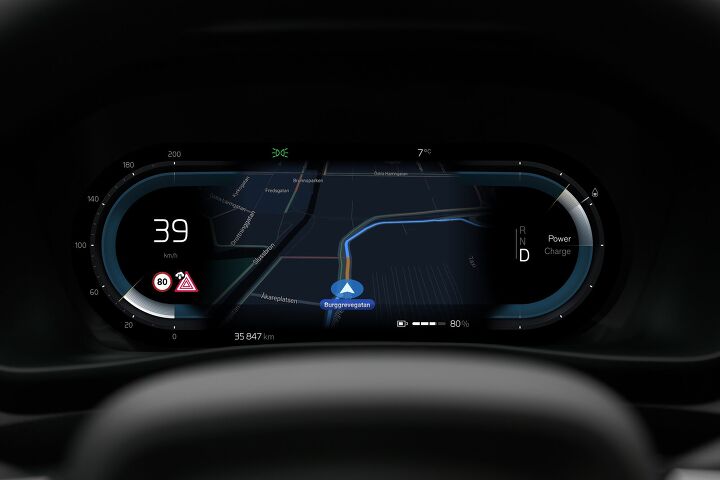
Volvo is introducing a new feature that alerts drivers of accidents reported on the road ahead. With similar services available for free on select phone apps, many of which can be integrated with your vehicle’s infotainment display, Volvo’s offering doesn’t sound incredibly novel on its face. But it’s leveraging real-time data from government-operated traffic management centers via the automobile’s proprietary user interface, technically making the feature the first of its kind within the automotive industry.
Due to Volvo’s Accident Ahead Alert service requiring the vehicle to communicate with a national traffic management hub, it’s presently only available in Denmark. However, the plan is to expand the feature to encompass the whole of Europe and incorporate additional data via partnering with the European Data for Road Safety ecosystem. This is in tandem with allowing connected Volvo products to communicate information with each other.
“We’re happy that Volvo Cars as the first car maker has started using our new real-time traffic event data feed,” Stine Bendsen, head of the Danish Traffic Management Centre at the Danish Road Directorate, said as part of the release. “A quick alert about an accident ahead gives the driver more time to slow down and increase the distance to the car in front. This helps to lower the risk of follow-up collisions and protect the people working to clear the road.”
This is very true. But we already have ways of doing this with arguably better accuracy. Most of the big tech companies have navigation applications that incorporate accident warnings that are usually submitted by other people that are currently traveling on the road. This would presumably offer more frequent data points than having to rely entirely on connected Volvos and government traffic hubs — depending on how the latter party monitors their roads.
In the event of a horrible wreck having taken place on a stretch of highway covered by loads of traffic cams, those traffic hubs are probably the first to know and likely to have more comprehensive details than any passerby. But it could be some time before the government is alerted to an accident on a less populated roadway and then manages to input the information that then has to be relayed to your car. Granted, it’ll still be happening quickly and digitally. But the same can be said of something like Waze, Google or Apple Maps.
Another big question is what else is Accident Ahead Alert going to offer? Many navigation applications will often warn drivers of impending speed traps, helping them avoid tickets. What are the odds those traffic enforcement centers are going to be telling Volvo where every police vehicle with a speed detector is going to be posted?
This is certainly a nice service to have. It’s just one that many of us have already. Likewise requiring cars to be networked to a government database is probably going to steer some people away from the brand. But most customers won’t be aware how the system works, let alone be bothered enough to give it a second thought.
Volvo hasn’t officially called this a pilot program. But rolling it out in Denmark makes it seem like that’s probably the case. Assuming the company manages how to work data transfer with government data hubs — the vehicle-to-vehicle communications are already figured out — for the Danes, it should scale up to encompass the whole of Europe. From there, the company will presumably see if it can begin service for other Western markets.
[Image: Volvo]
Become a TTAC insider. Get the latest news, features, TTAC takes, and everything else that gets to the truth about cars first by subscribing to our newsletter.

